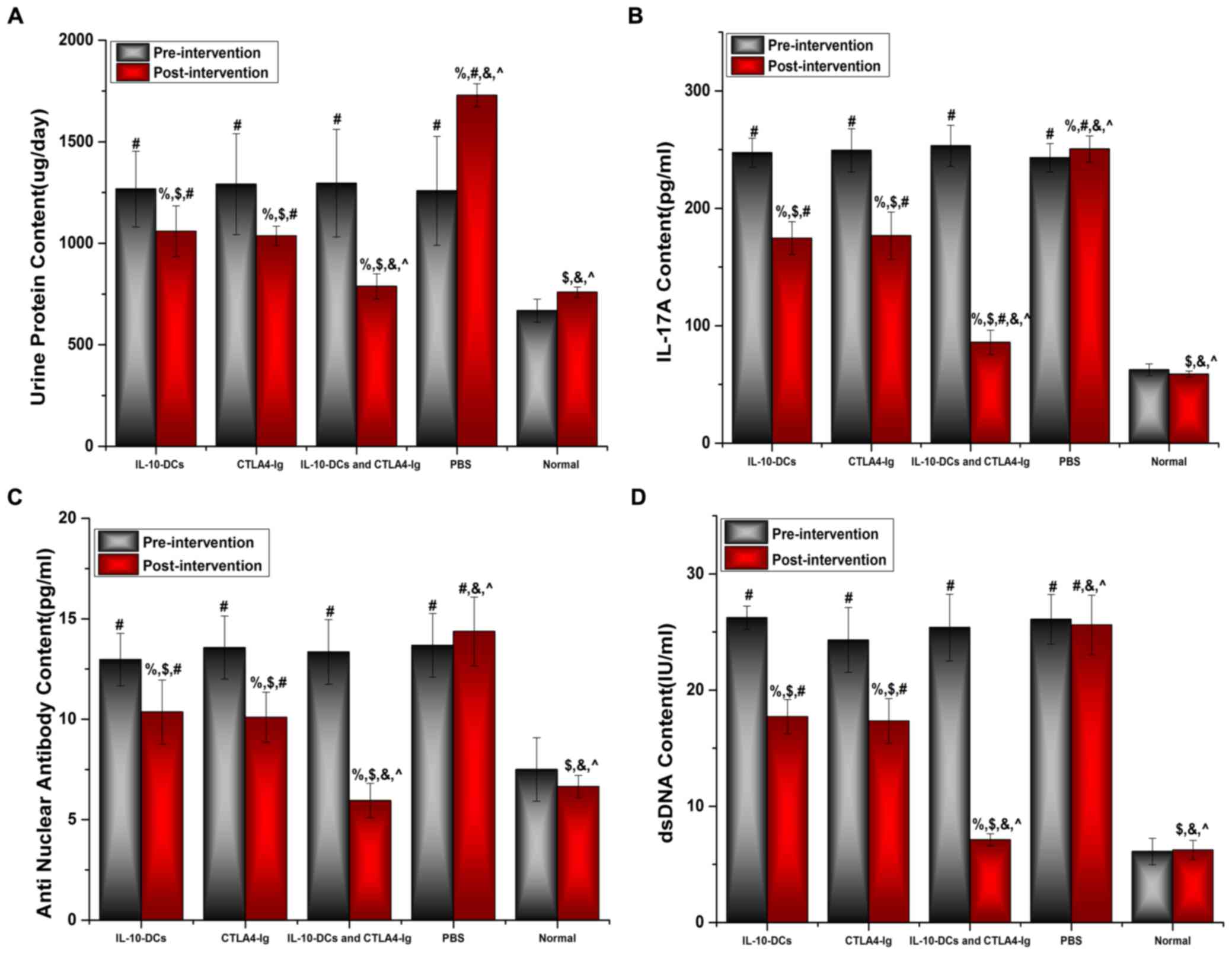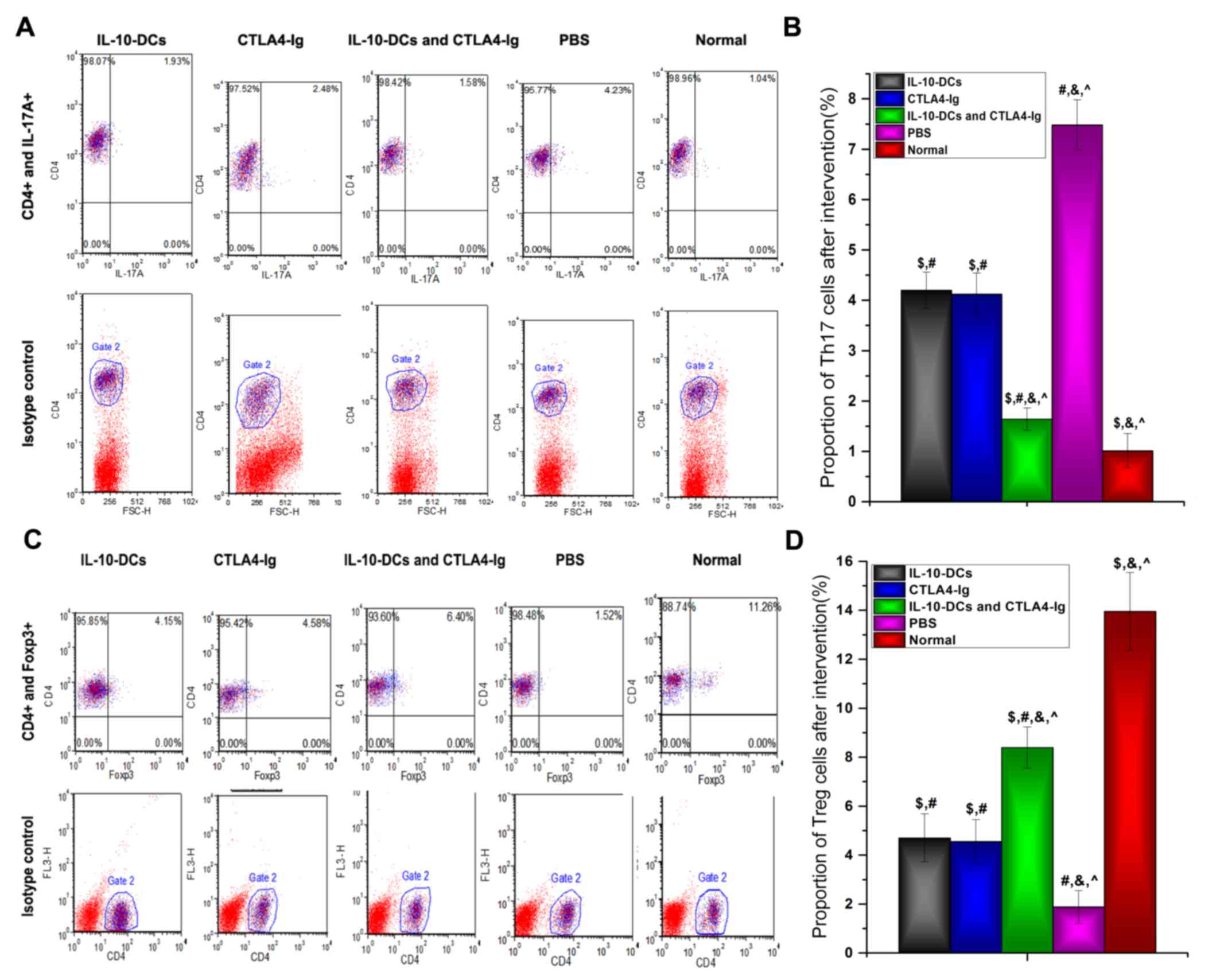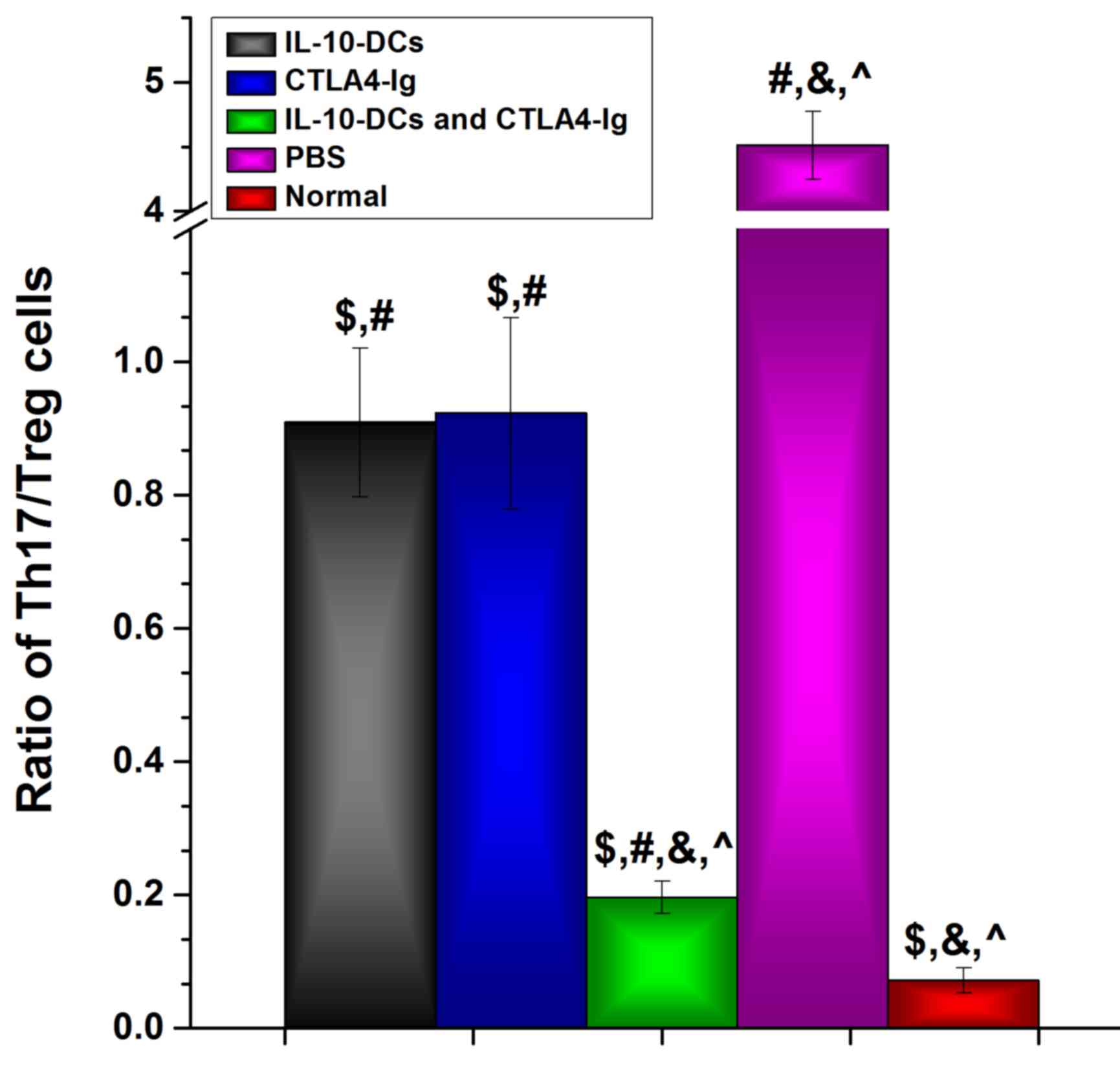|
1
|
Tsokos GC and Kammer GM: Molecular
aberrations in human systemic lupus erythematosus. Mol Med Today.
6:418–424. 2000. View Article : Google Scholar : PubMed/NCBI
|
|
2
|
Fassbinder T, Saunders U, Mickholz E, Jung
E, Becker H, Schluter B and Jacobi AM: Differential effects of
cyclophosphamide and mycophenolate mofetil on cellular and
serological parameters in patients with systemic lupus
erythematosus. Arthritis Res Ther. 17:922015. View Article : Google Scholar : PubMed/NCBI
|
|
3
|
Schiffer L, Sinha J, Wang X, Huang W, von
Gersdorff G, Schiffer M, Madaio MP and Davidson A: Short term
administration of costimulatory blockade and cyclophosphamide
induces remission of systemic lupus erythematosus nephritis in
NZB/W F1 mice by a mechanism downstream of renal immune complex
deposition. J Immunol. 171:489–497. 2003. View Article : Google Scholar : PubMed/NCBI
|
|
4
|
Griffiths B, Emery P, Ryan V, Isenberg D,
Akil M, Thompson R, Maddison P, Griffiths ID, Lorenzi A, Miles S,
et al: The BILAG multi-centre open randomized controlled trial
comparing ciclosporin vs azathioprine in patients with severe SLE.
Rheumatology (Oxford). 49:723–732. 2010. View Article : Google Scholar : PubMed/NCBI
|
|
5
|
Shen C, He Y, Cheng K, Zhang D, Miao S,
Zhang A, Meng F, Miao F and Zhang J: Killer artificial
antigen-presenting cells deplete alloantigen-specific T cells in a
murine model of alloskin transplantation. Immunol Lett.
138:144–155. 2011. View Article : Google Scholar : PubMed/NCBI
|
|
6
|
Mozaffarian N, Wiedeman AE and Stevens AM:
Active systemic lupus erythematosus is associated with failure of
antigen-presenting cells to express programmed death ligand-1.
Rheumatology (Oxford). 47:1335–1341. 2008. View Article : Google Scholar : PubMed/NCBI
|
|
7
|
Sawla P, Hossain A, Hahn BH and Singh RP:
Regulatory T cells in systemic lupus erythematosus (SLE); role of
peptide tolerance. Autoimmun Rev. 11:611–614. 2012. View Article : Google Scholar : PubMed/NCBI
|
|
8
|
Smyth LA, Ratnasothy K, Moreau A, Alcock
S, Sagoo P, Meader L, Tanriver Y, Buckland M, Lechler R and
Lombardi G: Tolerogenic donor-derived dendritic cells risk
sensitization in vivo owing to processing and presentation by
recipient APCs. J Immunol. 190:4848–4860. 2013. View Article : Google Scholar : PubMed/NCBI
|
|
9
|
Spisek R, Bretaudeau L, Barbieux I, Meflah
K and Gregoire M: Standardized generation of fully mature p70 IL-12
secreting monocyte-derived dendritic cells for clinical use. Cancer
Immunol Immunother. 50:417–427. 2001. View Article : Google Scholar : PubMed/NCBI
|
|
10
|
Real E, Kaiser A, Raposo G, Amara A,
Nardin A, Trautmann A and Donnadieu E: Immature dendritic cells
(DCs) use chemokines and intercellular adhesion molecule (ICAM)-1,
but not DC-specific ICAM-3-grabbing nonintegrin, to stimulate CD4+
T cells in the absence of exogenous antigen. J Immunol. 173:50–60.
2004. View Article : Google Scholar : PubMed/NCBI
|
|
11
|
Tang LL, Zhang Z, Zheng JS, Sheng JF and
Liu KZ: Phenotypic and functional characteristics of dendritic
cells derived from human peripheral blood monocytes. J Zhejiang
Univ Sci B. 6:1176–1181. 2005. View Article : Google Scholar : PubMed/NCBI
|
|
12
|
Kalinski P, Schuitemaker JH, Hilkens CM,
Wierenga EA and Kapsenberg ML: Final maturation of dendritic cells
is associated with impaired responsiveness to IFN-gamma and to
bacterial IL-12 inducers: Decreased ability of mature dendritic
cells to produce IL-12 during the interaction with Th cells. J
Immunol. 162:3231–3236. 1999.PubMed/NCBI
|
|
13
|
Gombos I, Detre C, Vámosi G and Matkó J:
Rafting MHC-II domains in the APC (presynaptic) plasma membrane and
the thresholds for T-cell activation and immunological synapse
formation. Immunol Lett. 92:117–124. 2004. View Article : Google Scholar : PubMed/NCBI
|
|
14
|
Cochand L, Isler P, Songeon F and Nicod
LP: Human lung dendritic cells have an immature phenotype with
efficient mannose receptors. Am J Respir Cell Mol Biol. 21:547–554.
1999. View Article : Google Scholar : PubMed/NCBI
|
|
15
|
Janikashvili N, Bonnotte B, Katsanis E and
Larmonier N: The dendritic cell-regulatory T lymphocyte crosstalk
contributes to tumor-induced tolerance. Clin Dev Immunol.
2011:4303942011. View Article : Google Scholar : PubMed/NCBI
|
|
16
|
Choi KH, Choi BH, Park SR, Kim BJ and Min
BH: The chondrogenic differentiation of mesenchymal stem cells on
an extracellular matrix scaffold derived from porcine chondrocytes.
Biomaterials. 31:5355–5365. 2010. View Article : Google Scholar : PubMed/NCBI
|
|
17
|
Lutz MB, Suri RM, Niimi M, Ogilvie AL,
Kukutsch NA, Rössner S, Schuler G and Austyn JM: Immature dendritic
cells generated with low doses of GM-CSF in the absence of IL-4 are
maturation resistant and prolong allograft survival in vivo. Eur J
Immunol. 30:1813–1822. 2000. View Article : Google Scholar : PubMed/NCBI
|
|
18
|
Lott DG, Dan O, Lu L and Strome M: Decoy
NF-kappaB fortified immature dendritic cells maintain laryngeal
allograft integrity and provide enhancement of regulatory T cells.
Laryngoscope. 120:44–52. 2010.PubMed/NCBI
|
|
19
|
Liu QL, Wang YS and Wang JX: Effect of
growth hormone on the immune function of dendritic cells. Chin Med
J (Engl). 123:1078–1083. 2010.PubMed/NCBI
|
|
20
|
Liu WH, Liu JJ, Wu J, Zhang LL, Liu F, Yin
L, Zhang MM and Yu B: Novel mechanism of inhibition of dendritic
cells maturation by mesenchymal stem cells via interleukin-10 and
the JAK1/STAT3 signaling pathway. PLoS One. 8:e554872013.
View Article : Google Scholar : PubMed/NCBI
|
|
21
|
Commeren DL, Van Soest PL, Karimi K,
Löwenberg B, Cornelissen JJ and Braakman E: Paradoxical effects of
interleukin-10 on the maturation of murine myeloid dendritic cells.
Immunology. 110:188–196. 2003. View Article : Google Scholar : PubMed/NCBI
|
|
22
|
Lee WC, Qiani S, Wan Y, Li W, Xing Z,
Gauldie J, Fung JJ, Thomson AW and Lu L: Contrasting effects of
myeloid dendritic cells transduced with an adenoviral vector
encoding interleukin-10 on organ allograft and tumour rejection.
Immunology. 101:233–241. 2000. View Article : Google Scholar : PubMed/NCBI
|
|
23
|
Oberholzer A, Oberholzer C, Efron PA,
Scumpia PO, Uchida T, Bahjat K, Ungaro R, Tannahill CL, Murday M,
Bahjat FR, et al: Functional modification of dendritic cells with
recombinant adenovirus encoding interleukin 10 for the treatment of
sepsis. Shock. 23:507–515. 2005.PubMed/NCBI
|
|
24
|
Coates PT, Krishnan R, Kireta S, Johnston
J and Russ GR: Human myeloid dendritic cells transduced with an
adenoviral interleukin-10 gene construct inhibit human skin graft
rejection in humanized NOD-scid chimeric mice. Gene Ther.
8:1224–1233. 2001. View Article : Google Scholar : PubMed/NCBI
|
|
25
|
Müller G, Müller A, Tüting T, Steinbrink
K, Saloga J, Szalma C, Knop J and Enk AH: Interleukin-10-treated
dendritic cells modulate immune responses of naive and sensitized T
cells in vivo. J Invest Dermatol. 119:836–841. 2002. View Article : Google Scholar : PubMed/NCBI
|
|
26
|
Mok MY: Tolerogenic dendritic cells: Role
and therapeutic implications in systemic lupus erythematosus. Int J
Rheum Dis. 18:250–259. 2015. View Article : Google Scholar : PubMed/NCBI
|
|
27
|
Oracki SA, Tsantikos E, Quilici C, Light
A, Schmidt T, Lew AM, Martin JE, Smith KG, Hibbs ML and Tarlinton
DM: CTLA4Ig alters the course of autoimmune disease development in
Lyn−/− mice. J Immunol. 184:757–763. 2010. View Article : Google Scholar : PubMed/NCBI
|
|
28
|
Badell IR, Russell MC, Cardona K, Shaffer
VO, Turner AP, Avila JG, Cano JA, Leopardi FV, Song M, Strobert EA,
et al: CTLA4Ig prevents alloantibody formation following nonhuman
primate islet transplantation using the CD40-specific antibody 3A8.
Am J Transplant. 12:1918–1923. 2012. View Article : Google Scholar : PubMed/NCBI
|
|
29
|
Zhou Y, Leng X, Luo S, Su Z, Luo X, Guo H,
Mo C, Zou Q, Liu Y and Wang Y: Tolerogenic dendritic cells
generated with tofacitinib ameliorate experimental autoimmune
encephalomyelitis through modulation of Th17/Treg balance. J
Immunol Res. 2016:50215372016. View Article : Google Scholar : PubMed/NCBI
|
|
30
|
Ureta G, Osorio F, Morales J, Rosemblatt
M, Bono MR and Fierro JA: Generation of dendritic cells with
regulatory properties. Transplant Proc. 39:pp. 633–637. 2007;
View Article : Google Scholar : PubMed/NCBI
|
|
31
|
Mahnke K, Schmitt E, Bonifaz L, Enk AH and
Jonuleit H: Immature, but not inactive: The tolerogenic function of
immature dendritic cells. Immunol Cell Biol. 80:477–483. 2002.
View Article : Google Scholar : PubMed/NCBI
|
|
32
|
Laborde EA, Vanzulli S, Beigier-Bompadre
M, Isturiz MA, Ruggiero RA, Fourcade MG, Catalan Pellet AC, Sozzani
S and Vulcano M: Immune complexes inhibit differentiation,
maturation, and function of human monocyte-derived dendritic cells.
J Immunol. 179:673–681. 2007. View Article : Google Scholar : PubMed/NCBI
|
|
33
|
Griffiths KL and O'Neill HC: Dendritic
cells as immune regulators: The mouse model. J Cell Mol Med.
12:1909–1914. 2008. View Article : Google Scholar : PubMed/NCBI
|
|
34
|
Röner S, Zinser E, Menges M, Wiethe C,
Littmann L, Hänig J, Steinkasserer A and Lutz MB: Minor role of
bystander tolerance to fetal calf serum in a peptide-specific
dendritic cell vaccine model against autoimmunity: Comparison with
serum-free cultures. J Immunother. 31:656–664. 2008. View Article : Google Scholar : PubMed/NCBI
|
|
35
|
Allavena P, Piemonti L, Longoni D,
Bernasconi S, Stoppacciaro A, Ruco L and Mantovani A: IL-10
prevents the differentiation of monocytes to dendritic cells but
promotes their maturation to macrophages. Eur J Immunol.
28:359–369. 1998. View Article : Google Scholar : PubMed/NCBI
|
|
36
|
Morel AS, Quaratino S, Douek DC and Londei
M: Split activity of interleukin-10 on antigen capture and antigen
presentation by human dendritic cells: Definition of a maturative
step. Eur J Immunol. 27:26–34. 1997. View Article : Google Scholar : PubMed/NCBI
|
|
37
|
Buelens C, Verhasselt V, De Groote D,
Thielemans K, Goldman M and Willems F: Interleukin-10 prevents the
generation of dendritic cells from human peripheral blood
mononuclear cells cultured with interleukin-4 and
granulocyte/macrophage-colony-stimulating factor. Eur J Immunol.
27:756–762. 1997. View Article : Google Scholar : PubMed/NCBI
|
|
38
|
Akdis CA and Akdis M: Mechanisms of immune
tolerance to allergens: Role of IL-10 and Tregs. J Clin Invest.
124:4678–4680. 2014. View Article : Google Scholar : PubMed/NCBI
|
|
39
|
Corinti S, Albanesi C, la Sala A, Pastore
S and Girolomoni G: Regulatory activity of autocrine IL-10 on
dendritic cell functions. J Immunol. 166:4312–4318. 2001.
View Article : Google Scholar : PubMed/NCBI
|
|
40
|
Stoop JN, Harry RA, von Delwig A, Isaacs
JD, Robinson JH and Hilkens CM: Therapeutic effect of tolerogenic
dendritic cells in established collagen-induced arthritis is
associated with a reduction in Th17 responses. Arthritis Rheum.
62:3656–3665. 2010. View Article : Google Scholar : PubMed/NCBI
|
|
41
|
Oh BC, Lee HM, Lim DP, Cho JJ, Lee G, Lee
DS and Lee JR: Effect of immature dendritic cell injection before
heterotropic cardiac allograft. Transplant Proc. 38:pp. 3189–3192.
2006; View Article : Google Scholar : PubMed/NCBI
|
|
42
|
Yin W, Ouyang S, Li Y, Xiao B and Yang H:
Immature dendritic cell-derived exosomes: A promise subcellular
vaccine for autoimmunity. Inflammation. 36:232–240. 2013.
View Article : Google Scholar : PubMed/NCBI
|
|
43
|
Bloy N, Pol J, Aranda F, Eggermont A,
Cremer I, Fridman WH, Fučíková J, Galon J, Tartour E, Spisek R, et
al: Trial watch: Dendritic cell-based anticancer therapy.
Oncoimmunology. 3:e9634242014. View Article : Google Scholar : PubMed/NCBI
|
|
44
|
Osada T, Chong G, Tansik R, Hong T,
Spector N, Kumar R, Hurwitz HI, Dev I, Nixon AB, Lyerly HK, et al:
The effect of anti-VEGF therapy on immature myeloid cell and
dendritic cells in cancer patients. Cancer Immunol Immunother.
57:1115–1124. 2008. View Article : Google Scholar : PubMed/NCBI
|
|
45
|
Ma ZH, Lu H, Lu Q, Yao ZF and Han Y: CD1d
blockade suppresses the capacity of immature dendritic cells to
prime allogeneic T cell response. J Surg Res. 183:894–899. 2013.
View Article : Google Scholar : PubMed/NCBI
|
|
46
|
Enk AH, Angeloni VL, Udey MC and Katz SI:
Inhibition of Langerhans cell antigen-presenting function by IL-10.
A role for IL-10 in induction of tolerance. J Immunol.
151:2390–2398. 1993.PubMed/NCBI
|
|
47
|
Steinbrink K, Jonuleit H, Müller G,
Schuler G, Knop J and Enk AH: Interleukin-10-treated human
dendritic cells induce a melanoma-antigen-specific anergy in CD8(+)
T cells resulting in a failure to lyse tumor cells. Blood.
93:1634–1642. 1999.PubMed/NCBI
|
|
48
|
Chen L, Zheng L, He W, Qiu M, Gao L, Liu J
and Huang A: Cotransfection with IL-10 and TGF-β1 into immature
dendritic cells enhances immune tolerance in a rat liver
transplantation model. Am J Physiol Gastrointest Liver Physiol.
306:G575–G581. 2014. View Article : Google Scholar : PubMed/NCBI
|
|
49
|
Bakdash G, Sittig SP, van Dijk T, Figdor
CG and de Vries IJ: The nature of activatory and tolerogenic
dendritic cell-derived signal II. Front Immunol. 4:532013.
View Article : Google Scholar : PubMed/NCBI
|
|
50
|
Linsley PS and Nadler SG: The clinical
utility of inhibiting CD28-mediated costimulation. Immunol Rev.
229:307–321. 2009. View Article : Google Scholar : PubMed/NCBI
|
|
51
|
Tian M, Lv Y, Zhai C, Zhu H, Yu L and Wang
B: Alternative immunomodulatory strategies for xenotransplantation:
CD80/CD86-CTLA4 pathway-modified immature dendritic cells promote
xenograft survival. PLoS One. 8:e696402013. View Article : Google Scholar : PubMed/NCBI
|
|
52
|
Ko HJ, Cho ML, Lee SY, Oh HJ, Heo YJ, Moon
YM, Kang CM, Kwok SK, Ju JH, Park SH, et al: CTLA4-Ig modifies
dendritic cells from mice with collagen-induced arthritis to
increase the CD4+CD25+Foxp3+ regulatory T cell population. J
Autoimmun. 34:111–120. 2010. View Article : Google Scholar : PubMed/NCBI
|













